Shifting on a mountain bike has long been a personal preference, an acquired taste of responsiveness, predictability, and reliability that, for many, plants their feet (or cranks) in one of two camps for the long haul. Enter a third-party option. Sure, it's been tried before, but it has often resulted in a short life span—both in terms of consumer interest and product viability. But there is no reason there can't be more players in the drivetrain arena, and TRP is the latest challenger competing with the staples SRAM and Shimano.
TRP's latest EVO12 groupset is a culmination of enhancements and rider feedback stacked upon the efforts of their initial 12-speed system with an emphasis on stability and robustness. In a time where electronic shifting has quickly become the choice for premium OEM spec, can the EVO12 throw a chain into the spokes of the two-party moguls and their ever-expanding mechanical and electronic options?
Highlights
| EVO12 Derailleur | EVO12 Shifter |
EVO12 Cassette
Bottom Bracket
|
EVO Carbon Crankset
Chainrings
|
Strengths | Weaknesses |
|
|
Product Overview
Known primarily for its acclaimed braking systems, TRP debuted the EVO12 Drivetrain in March of 2023, giving us a sneak peek of the new products at parent company Tektro's Taiwan factory just days before the public release. We tested it briefly on local singletrack, but it wasn't until this year that a test drivetrain would finally arrive like a golden ticket from the Wonka Factory. And golden it was…
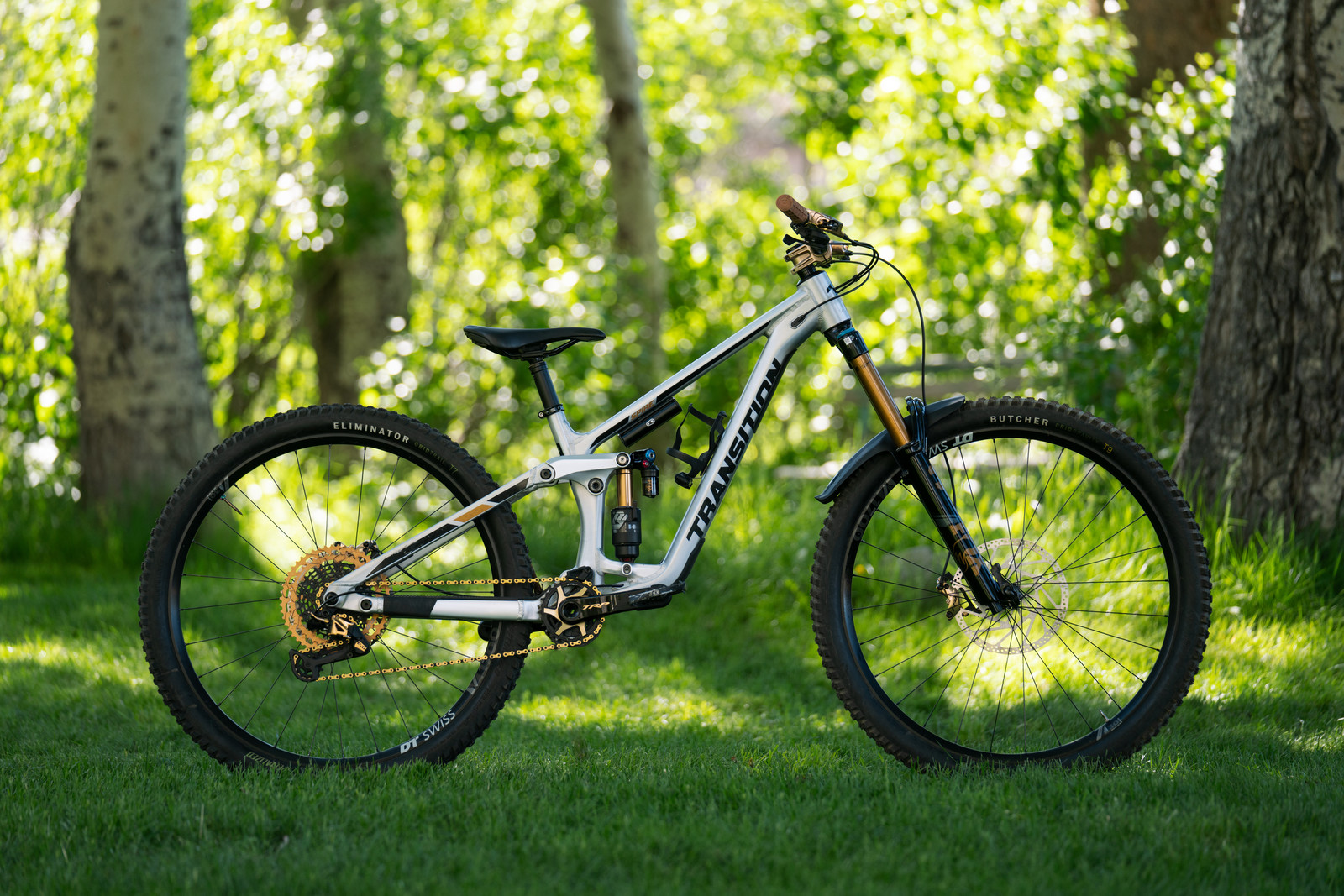
The 12-speed EVO drivetrain is an evolution of TRP's former DH7 and TR12 drivetrains, modernized to withstand the demands of today's mountain bikes and aggressive riders. We tested the EVO carbon crankset, cassette, chainring, derailleur, shifter, and bottom bracket, matched to a KMC chain, all in the gold option. These parts are intended to compete directly with SRAM's X01 and Shimano's XTR mechanical systems in terms of weight, pricing, and performance.
Unique Features
The derailleur and shifter are the highlight pieces of TRP's EVO12 groupset. When the drivetrain was released, TRP stated the design goal was stability and robustness. Much of that stability stems from the features incorporated in the derailleur with the Hall Lock lever, Horizontal Parallelogram, and Instant Silent Clutch.

The Hall Lock Lever derives its name from John Hall, longtime mechanic TRP athlete Aaron Gwin. The On/Off lever stabilizes the derailleur at the main pivot bolt to reduce noise. Releasing the lever allows the derailleur to be pulled back for wheel removal in conjunction with the Cage Release feature.
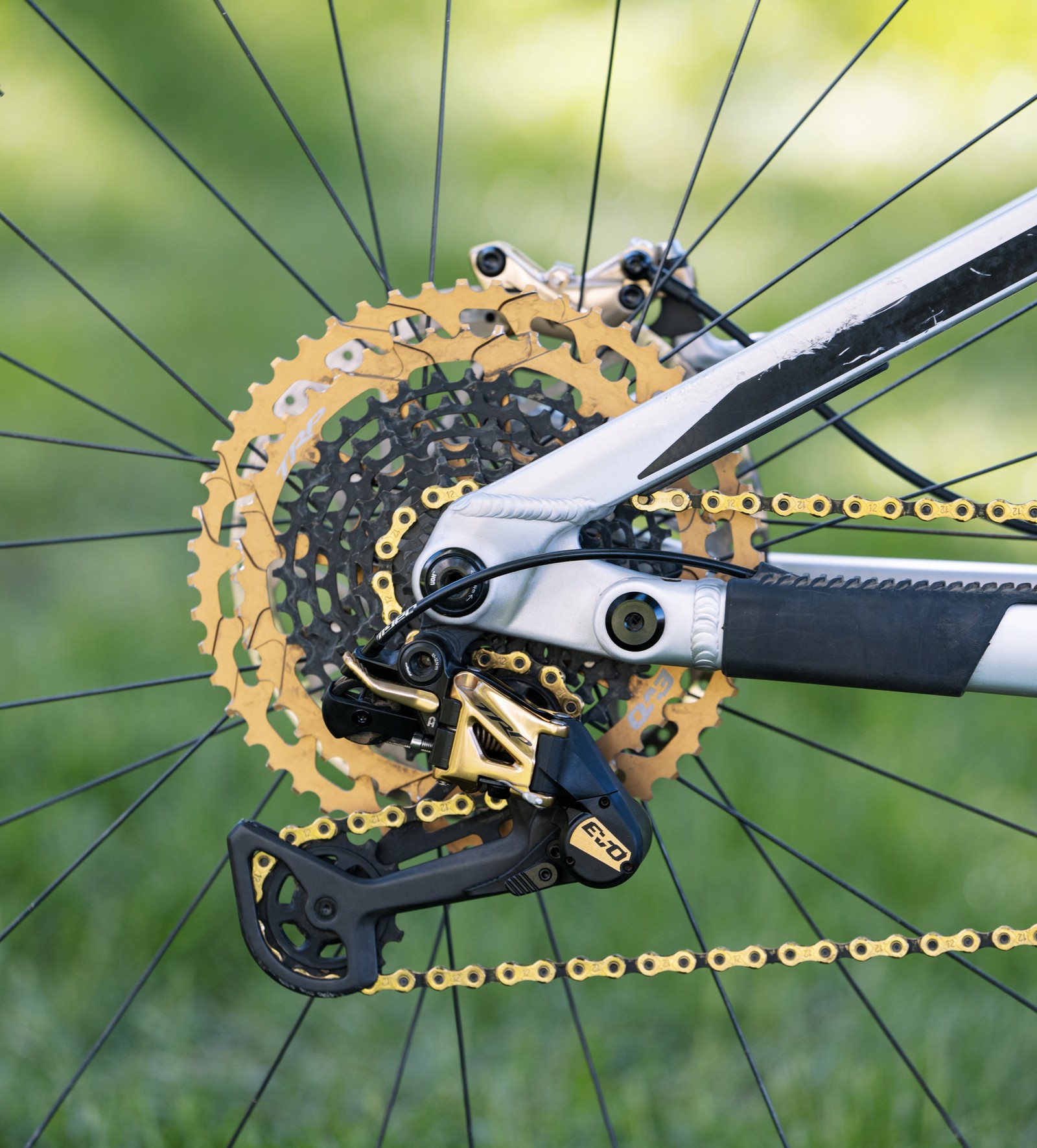
The Cage Release feature is a lever and pin design that releases spring tension on the cage, allowing it to fully extend for wheel removal. This feature requires applying the right amount of force on the lever to release the pin, which is rather difficult and unintuitive at first try. If too much force is applied, the pin will not release. (edit: TRP did a running change this year to the design of the pin tip to improve its release function)
The instant engagement clutch is a unidirectional locking needle roller bearing design, meaning that once the cage moves, it engages to minimize chain and derailleur slop and noise. TRP's original TR12 derailleur used a ratchet-style design that was not an instant engagement.

Where Does the EVO12 Groupset Stack Up?
| Groupset | Shifter | Derailleur | Cassette | Crankset | Chain | Total Cost | Total Weight |
| Shimano XT | $63 / 120g | $119 / 284g | $155 / 470g | $219 / 608g | $49 / 252g | $605 | 1,734g |
| SRAM GX Eagle | $49 / 122g | $135 / 290g | $231 / 450g | $296 / 470g | $36 / 244g | $747 | 1,576g |
| Shimano XTR | $137 / 112g | $274 / 237g | $410 / 367g | $550 / 531g | $69 / 242g | $1,440 | 1,489g |
| SRAM X01 | $96 / 143g | $214 / 276g | $415 / 350g | $377 / 470g | $64 / 239g | $1,166 | 1,478g |
| SRAM GX Transmission | $150 / 50g | $400 / 470g | $250 / 445g | $200 / 740g | $50 / 285g | $1,050 | 1,990g |
| TRP EVO12 | $100 / 120g | $230 / 300g | $400 / 372g | $425 / 580g | $39 / 234g | $1,194 | 1,606g |
*Price and weight for carbon cranks with chainring.
Comparing the major mechanical and electronic drivetrain options shows how the EVO12 groupset is relatively in line with SRAM's X01 and Shimano's XTR groupsets, coming in heavier than both, but cheaper than X01. In today's competitive post-COVID marketplace, some of these mechanical options can be found at less than retail price, sans the TRP EVO12.
On The Trail
To determine how the EVO12's value and performance stacks up against SRAM and Shimano, we focused on the practicality of its unique features in the bike stand and how they translate to on-trail performance and durability.
Upon installation of the drivetrain (and accompanying DHR EVO brakes), the gold components beamed from our Transition Spire. It's a premium and assertive look that we felt looked great. We put 400 miles on the drivetrain in mostly dry conditions around the Reno/Tahoe region. Our testing ranged from all-mountain climbing and descending to technical and rocky downhill laps.

The question most asked of our TRP drivetrain upon its discovery (almost always because of its appealing aesthetic) was, "How does it compare to Shimano and SRAM?" Well, it's a little like both and nothing like either.
Arguably, the most immediately noticeable aspect of shifting performance is lever feel—does the actuation of the thumb trigger and its feedback result in a comfortable and crisp shift? This is also one of the more distinct features of the TRP drivetrain. The ergonomics of the shifter, which is highly adjustable, is premium in quality to the touch, feeling instantly comfortable before pressure is applied. The stout but not overbuilt levers feel appropriate in shape and size. They are highly textured in the machining process for traction and practicality versus most options from SRAM, which are polished and almost slick to the touch (maybe for photographic value and shelf appeal?)
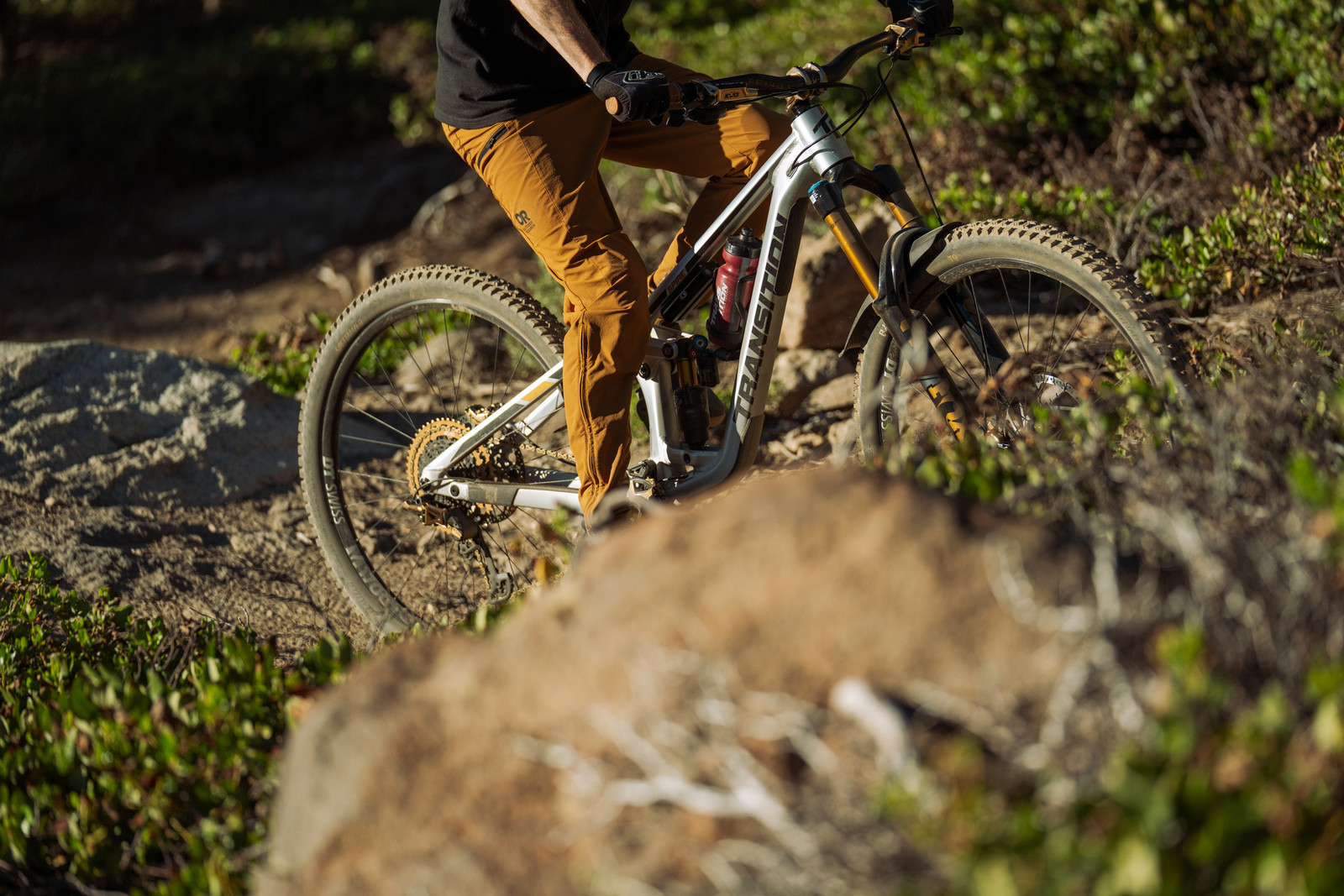
The satisfaction continues upon pushing the TRP shifter levers, resulting in an obvious and clean engagement of the derailleur reminiscent of its competitors. The upshift lever is the most satisfying, delivering one of the cleaner and consistent upshifts available on the market. The lever is light to push and has less resistance than that of Shimano XT or SRAM GX, feeling comparable to SRAM X01 and Shimano XTR.
Shifting to easier gears isn't quite as smooth when under load during climbs, most notably when getting into the largest gear of the cassette. Here, the drivetrain responds with a louder, aggressive thud as if the chain is slightly struggling to settle onto the 52T alloy cog of the cassette. The TRP EVO requires a noticeably longer revolution of the crank for the chain to settle onto the cog compared to the competition's premium offerings. Here, SRAM's EAGLE X01 and Shimano's XTR have a clear advantage.
Comparing a mechanical drivetrain shifter to electronic shifting is a different situation. It's much like comparing a manual transmission vehicle to an automatic: one part nostalgia, one part simplicity. There's no doubt that the SRAM AXS electronic pod shifter is easy to operate, incredibly fast, and almost lazy—characteristics that no mechanical drivetrain can truly match. But when it comes to feeling in control and getting back to basics sans-battery, the TRP shifter does itself justice. When we revisited it after riding SRAM's GX Transmission, we still appreciated the feel of the ole' trigger-style manual setup, even if it requires more effort and executes shifts slower.
TRP's multi-shift feature is appealing on paper, and previewing it on the bike stand was impressive. By flipping a switch on the underside of the shifter, one throw of the lever moves the derailleur up the cassette across numerous gears. On trail, however, our testing found it to be less practical, dropping only three gears per shift rather than the claimed five. Still, three is plenty for nearly any situation. The multishift option is not a feature we relied on regularly, but it's convenient to keep the shifter set to multishift should it be needed. With the lever's level of resistance, a mistaken shift of too many gears isn't an issue. While we didn't test the drivetrain on an eMTB, the multishift feature may be more practical when climbing challenging terrain.

The cassette's monoblock steel construction utilizes alloy for the 44T and 52T cogs to keep weight in check. Interestingly, these two cogs have a noticeably different feel when downshifting compared to the others. This more aggressive feedback could likely be due to the larger jump in teeth, moving from 36 to 44, and 44 to 52. Durability has been satisfactory, as the cassette has shown minimal wear on the teeth.

We tested the 170mm carbon crankset paired to a 30T chainring. The crankset is also available in alloy for a savings of $200 in trade for about 55g of added weight. The crank arms feature a high-quality protective decal that has held up well throughout testing, contrary to many others we've experienced that begin to peel away after the first ride.
We experienced one incident of a dropped chain which occurred late in the testing period in a stepped rock garden. The cause of the incident was unclear. Perhaps the chain guide had slightly moved out of place, or simply the chain slap from the rock chatter and active suspension resulted in the displacement from the chainring. Upon resetting the chain and loosening and retightening our OneUp chain guide, we were unable to replicate the issue.
Noise?
Under duress from technical descents and braking, the drivetrain isn't silent. We still find that Shimano's XTR and SRAM's XO1 drivetrains operate at a lower decibel threshold. The same can be said compared to SRAM's Transmission, which is even quieter than the mechanical drivetrains. However, the TRP-specific features like the Hall Lock and silent clutch mechanism perform as intended, keeping the harshest noises and chatter within reason. With regular lubing of the chain, the drivetrain ran smoothly and silently enough to keep from being a distraction.
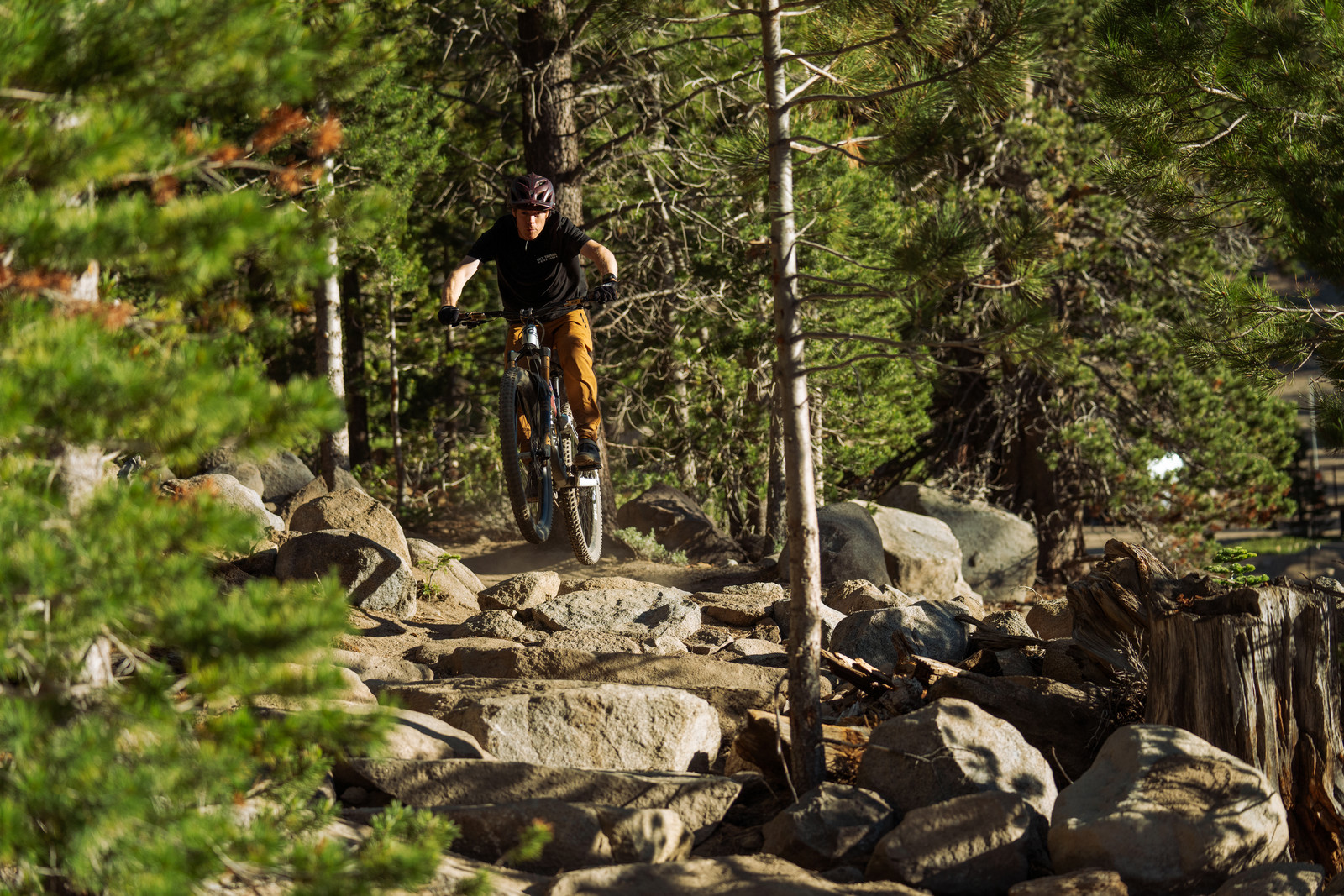
Things That Could Be Improved
TRP has achieved a formidable offering with the EVO12. Some fine-tuning of the cage release lever so that it's easier to release would be appreciated, as well as a less aggressive downshift to the granny gear. We also hope an electronic version isn't far off.
Long Term Durability
Nothing stood out as a liability and the majority of the parts feel robust and are well-made. The chain and cassette show no measurable sign of wear and the paint and finish on all components still looks nearly as good as new — an impressive feat. Even the cable tension has required little adjustment, with performance still very near that of day 1. TRP builds nearly all the components in their Taiwan factory, and quality control is evidently a priority. TRP offers a two year warranty on all drivetrain products should a manufacturing defect occur.
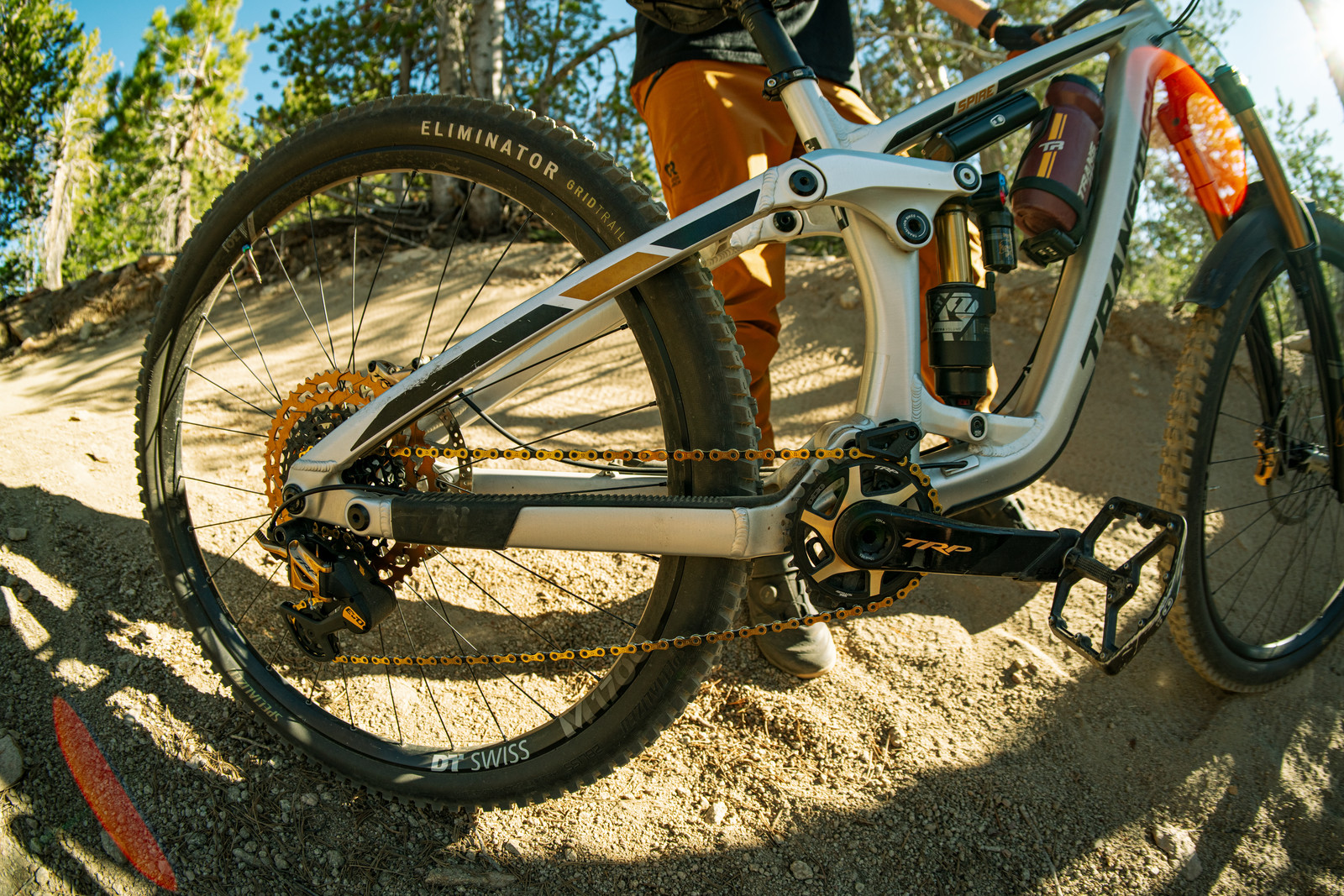
What's The Bottom Line?
Our extended time on TRP's EVO12 drivetrain closely reflects our initial takeaways from last year's debut, and that's a good thing. We've been satisfied with the performance and reliability of the complete package, ticking off the critical boxes from a mechanical drivetrain checklist.
However, the $1,200 retail price is a hurdle, with cheaper options available that deliver similar performance, some of which offer faster, smoother, and quieter shifting. You can also ride wireless shifting for less in the form of SRAM's GX Transmission, which retails for $1,099, making the EVO12 a tough sell for those who want the latest gadgets and tech.
Despite the price, TRP's EVO12 is a unique option compared to the mainstream players—eye-catching aesthetic, crisp feedback from the lever with predictable shifts, and durable componentry. TRP's years of experience in braking design and machining have certainly influenced their drivetrain product. That alone should instill confidence in interested cable connoisseurs that their investment will live up to the same standards as TRP's other products.
For more information, please visit trpcycling.com
View key specs, compare components, and rate the TRP EVO12 groupset in the Vital MTB Product Guide.
About The Reviewer
Rick Reed - Age: 41 // Years Riding MTB: Who's counting? // Height: 5' 9" (1.75m) // Weight: 142 pounds (64.4kg)
A veteran of the bike industry, Rick "E" Reed is a regular contributor to Vital. Rick enjoys riding fast tech, backcountry singletrack, and bike parks, occasionally sharing his chocolate with a select human being or two (you know who you are). He resides in Reno, Nevada with his terror dog, Zuul.


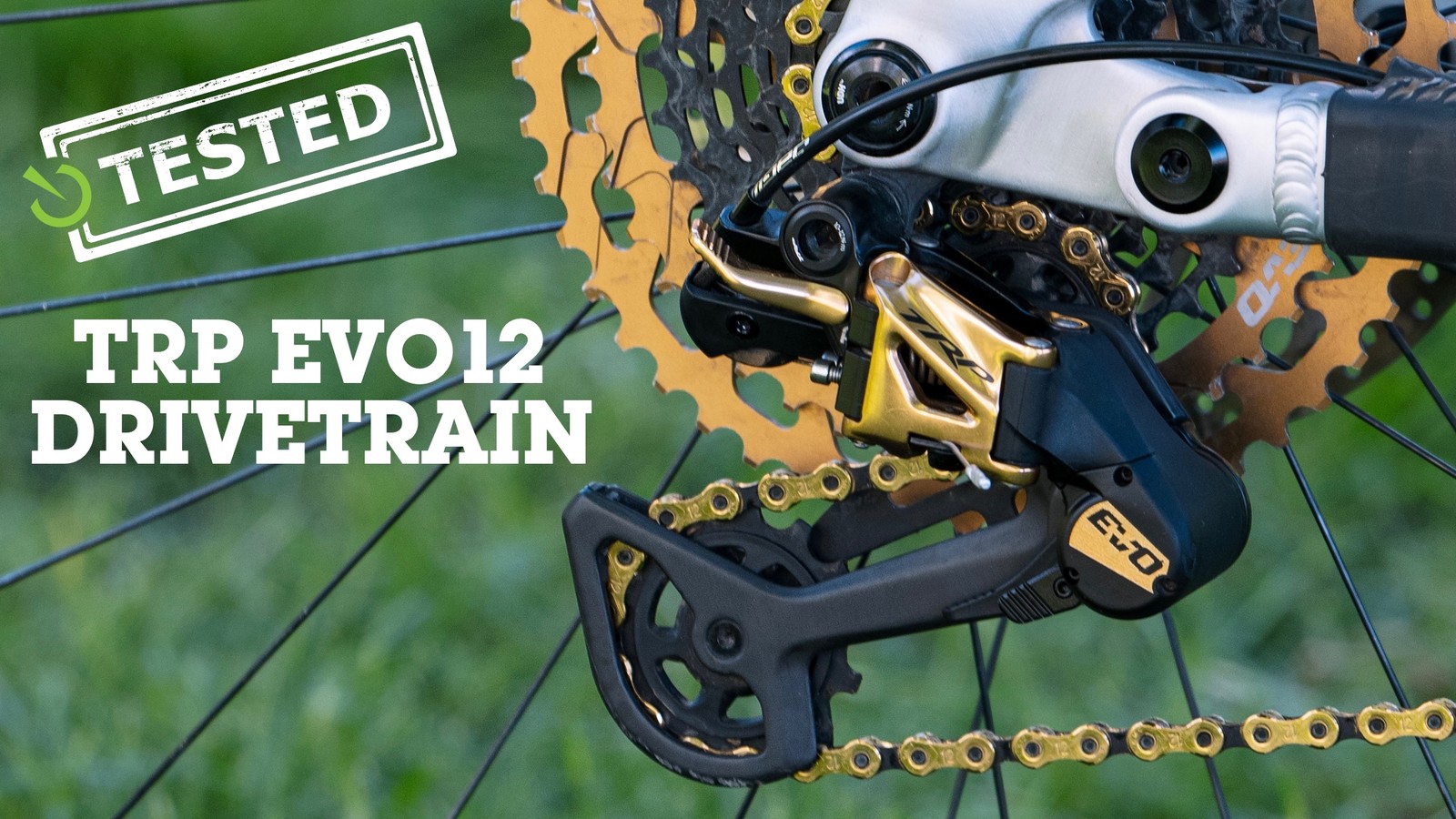




View replies to: TESTED: TRP EVO12 Drivetrain | The New Kid on the Block
Comments